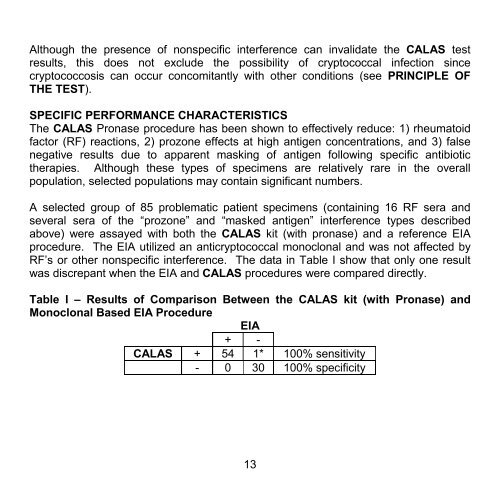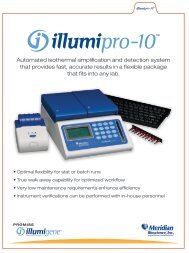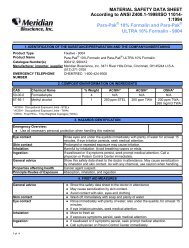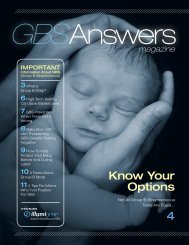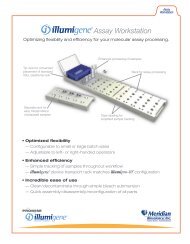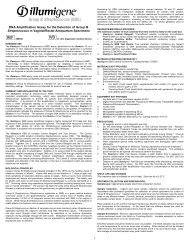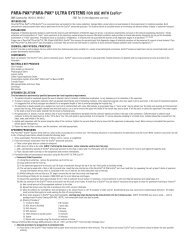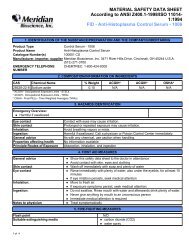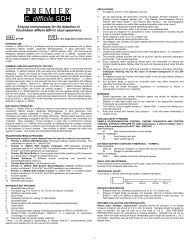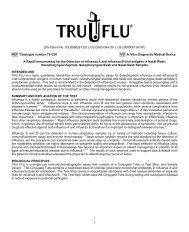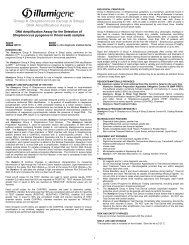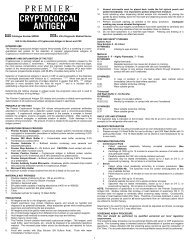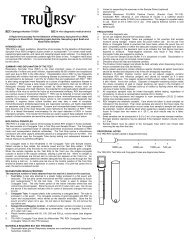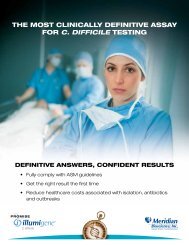Cryptococcal Antigen Latex Agglutination System (CALAS®)
Cryptococcal Antigen Latex Agglutination System (CALAS®)
Cryptococcal Antigen Latex Agglutination System (CALAS®)
Create successful ePaper yourself
Turn your PDF publications into a flip-book with our unique Google optimized e-Paper software.
Although the presence of nonspecific interference can invalidate the CALAS test<br />
results, this does not exclude the possibility of cryptococcal infection since<br />
cryptococcosis can occur concomitantly with other conditions (see PRINCIPLE OF<br />
THE TEST).<br />
SPECIFIC PERFORMANCE CHARACTERISTICS<br />
The CALAS Pronase procedure has been shown to effectively reduce: 1) rheumatoid<br />
factor (RF) reactions, 2) prozone effects at high antigen concentrations, and 3) false<br />
negative results due to apparent masking of antigen following specific antibiotic<br />
therapies. Although these types of specimens are relatively rare in the overall<br />
population, selected populations may contain significant numbers.<br />
A selected group of 85 problematic patient specimens (containing 16 RF sera and<br />
several sera of the “prozone” and “masked antigen” interference types described<br />
above) were assayed with both the CALAS kit (with pronase) and a reference EIA<br />
procedure. The EIA utilized an anticryptococcal monoclonal and was not affected by<br />
RF’s or other nonspecific interference. The data in Table I show that only one result<br />
was discrepant when the EIA and CALAS procedures were compared directly.<br />
Table I – Results of Comparison Between the CALAS kit (with Pronase) and<br />
Monoclonal Based EIA Procedure<br />
EIA<br />
+ -<br />
CALAS + 54 1* 100% sensitivity<br />
- 0 30 100% specificity<br />
13


